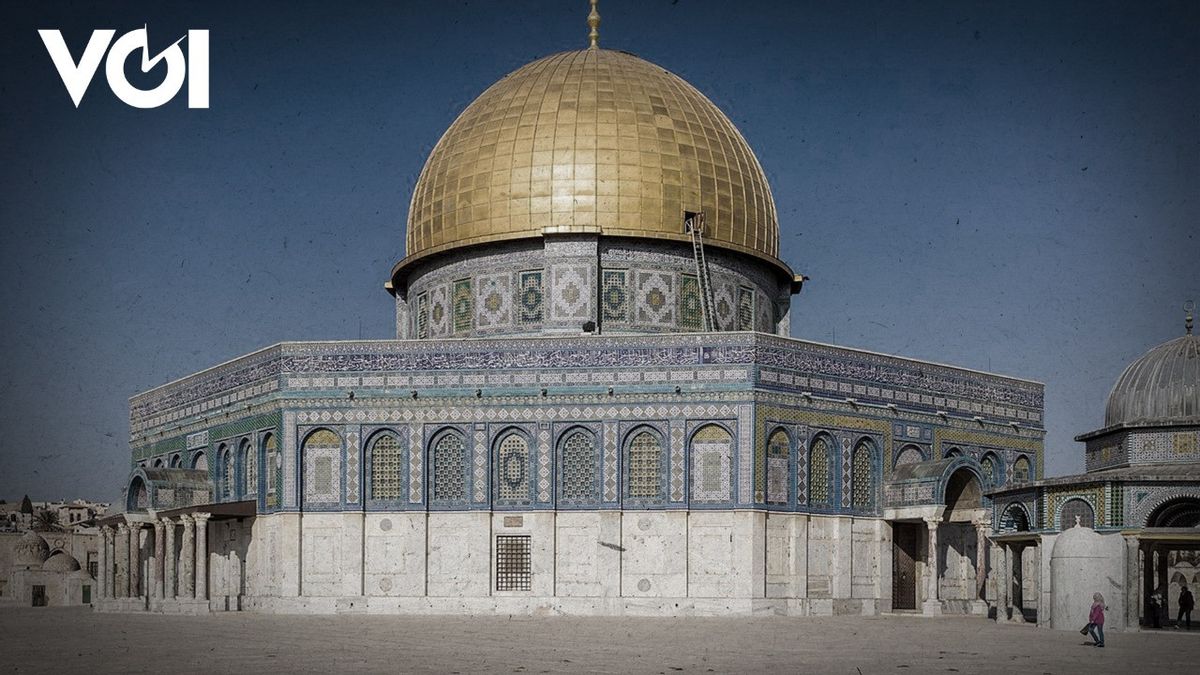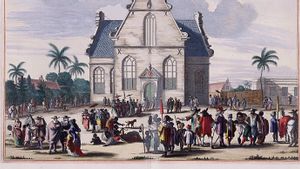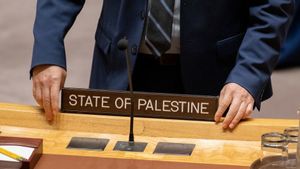
During Ramadan, the frequency of Muslims visiting mosques increases. Naturally, because this month there is more reward for those who zealously worship. But apart from being a place of worship, the mosque is also the center of Muslim civilization. VOI's signature series "Everything of Ramadan" will then trace the footsteps of Islamic civilization through historic mosques in Indonesia and the world.
Literally, mosque means a place of prostration (prayer). Based on the Big Indonesian Dictionary (KBBI), a mosque is defined as a house or building where Muslims worship.
Even so, mosques do not only grow as centers of worship for Muslims. Mosques are also the center of Muslim culture. At the same time, the mosque contains stories related to the spread of Islam in the world. Here are some historical mosques in Indonesia and the world.
Al-Atiq Mosque (Jakarta)
The existence of old mosques is proof that Islam in Jakarta is so strong. Even at that time, Jakarta was under the control of the Dutch colonial government. Jumroni in his journal entitled Historical Mosques in Jakarta (2006), brings back memories of these old mosques. One of the oldest is the al-Atiq Mosque.
Al-Atiq Mosque is a mosque located in Kampung Malay Besar, Tebet, South Jakarta. This mosque is predicted to have been built by the founder of the Kingdom of Banten, Sultan Maulana Hasanuddin in 1500.
Architecturally, this mosque is similar to the mosque that was built by Walisongo. Moreover, this mosque has a roof in the form of a three-tiered prism, similar to that of the Demak and Gresik Mosques.
However, this mosque was neglected and rundown. Then, Prince Jayakarta, who happened to be with his troops on their way to Jakarta, saw that the Al-Atiq mosque was not well maintained. On his orders later, this mosque was repaired around 1619. The local community recognized this mosque as the horse stable mosque, because many of the local residents had a livelihood as sado businessmen.
Until now, the original structure of the mosque is only a khotib stick which is in the pulpit of the mosque. The rest, have changed and adapted the building to the tastes of the times.
Masjid al-Alam (Jakarta)
Masjid al-Alam is located in Marunda, North Jakarta. This mosque was founded by the conqueror of Sunda Kelapa, Fatahillah in 1527. Similar to the al-Atiq Mosque, the al-Alam mosque architecture resembles the mosque built by Walisongo, the Demak Mosque. Even so, this mosque is not that big. in fact, it resembles a mushalla.
Since time immemorial, this mosque has been called the magic mosque. The reason is because the process of building a mosque is carried out in one day and night. Another uniqueness of this mosque is that it is located on the ceiling which is only two meters high from the ground. The small size is the reason this mosque is preserved to this day.
Masjid as-Salafiyah (Jakarta)
Masjid as-Salafiyah in action in Jatinegara Kaum, East Jakarta. This mosque was also built by Pangeran Jayakarta when he was beaten back from Sunda Kelapa by the Governor General Jan Pieterszoon Coen in 1620. Therefore, this mosque was originally named Masjid Pangeran Jayakarta. Moreover, it is said that this mosque was often used by Prince Jayakarta to rally support against the Dutch.
In that sense, apart from being a place of worship, this mosque is also used as a means of preaching and raising a spirit of resistance. The most interesting thing is that this mosque is also believed by local residents as the final resting place of Prince Jayakarta and his followers.
Luar Batang Mosque (Jakarta)
Luar Batang Mosque is a mosque located in the old village of Luar Batang. This mosque was founded in 1739. Meanwhile, Kampung Luar Batang is often called the "Sacred Village." The word sacred itself is pinned because of the tomb of a famous scholar named Sayid Husein bin Abubakar bin Abdillah Alaydrus, whose grave is now inside the Luar Batang Mosque.
“A leaf distributed at the Luar Batang Mosque tells of: He died on 27 June 1756 at the age of 40. His body was carried in stem brackets only to the Tanah Abang grave as it should have been. However, when he arrived at the cemetery, Habib's body was gone and it turned out that he had returned to his house, ”said Adolf Heuken in the book Historical Places in Jakarta (2007).
“This happened many times. So, it was agreed that this body would be buried in his house which is why it is called Luar Batang, ”added the German priest.
For more details regarding the history of Kampung Luar Batang, we have reviewed it in the article "The History of Kampung Luar Batang: From Crews Stopover to Pilgrimage Destinations."
No wonder, because of the story, his grave began to attract many pilgrims. Pilgrims are not only dominated by those who come from remote parts of the archipelago, but also come from abroad, such as China, Brunei Darussalam, to the Netherlands and those who come from the Middle East. There are so many that the sale of sacred objects at the grave site can reach 8 thousand guilders a year.
Indonesia is only a small part of the traces of religious civilization that descended on Arab lands. In other parts of the world especially in the Arabian Peninsula, the historical mosques are more and more closer to the traces of the early spread of Islam on Earth. What are they?
The Grand Mosque (Makkah)
Of course all Muslims around the world seem familiar with the Grand Mosque. There is the Ka'bah as the direction of the Muslim community in carrying out prayer obligations. It is recorded that more than four million people regularly carry out annual prayers at the Grand Mosque.
Apart from Hajj, the Grand Mosque is usually visited for the implementation of the Umrah pilgrimage. However, based on its history, it was the Kaaba that was built before the existence of the Haram mosque. The main Qibla of Muslims was built in the era of Prophet Ibrahim and his son, Prophet Ismail.
The Prophet's Mosque (Medina)
The Nabawi Mosque is a mosque that is almost 1,400 years old. The Nabawi Mosque has also undergone many expansions from its beginnings as a simple building, until now it is the second largest mosque in the world.
In its history, the mosque, which was built directly by the Prophet Muhammad, can accommodate up to one million worshipers. Its splendor can be seen from the 10 105 meter high minarets that surround the Prophet's Mosque.
Al-Aqsa Mosque (Jerusalem)
Al-Aqsa Mosque was built in 705. For Muslims the presence of this mosque is very important and holy. Moreover, according to a hadith from Imam Bukhari, this mosque is the third holiest site.
Thanks to that, praying there can be worth a thousand prayers. The durability of the building is amazing, al-Aqsa has withstood many earthquakes and continues to be preserved until now.
Quba Mosque (Medina)
The Quba Mosque is one of the oldest mosques in the world. It is recorded that this mosque was built by the Prophet Muhammada in 622. Or after the prophet emigrated from Mecca to Medina.
Although the oldest in the world, this mosque is not as big as the mosque previously described. This is because the Quba Mosque can only accommodate up to 20 thousand worshipers.

The English, Chinese, Japanese, Arabic, and French versions are automatically generated by the AI. So there may still be inaccuracies in translating, please always see Indonesian as our main language. (system supported by DigitalSiber.id)












